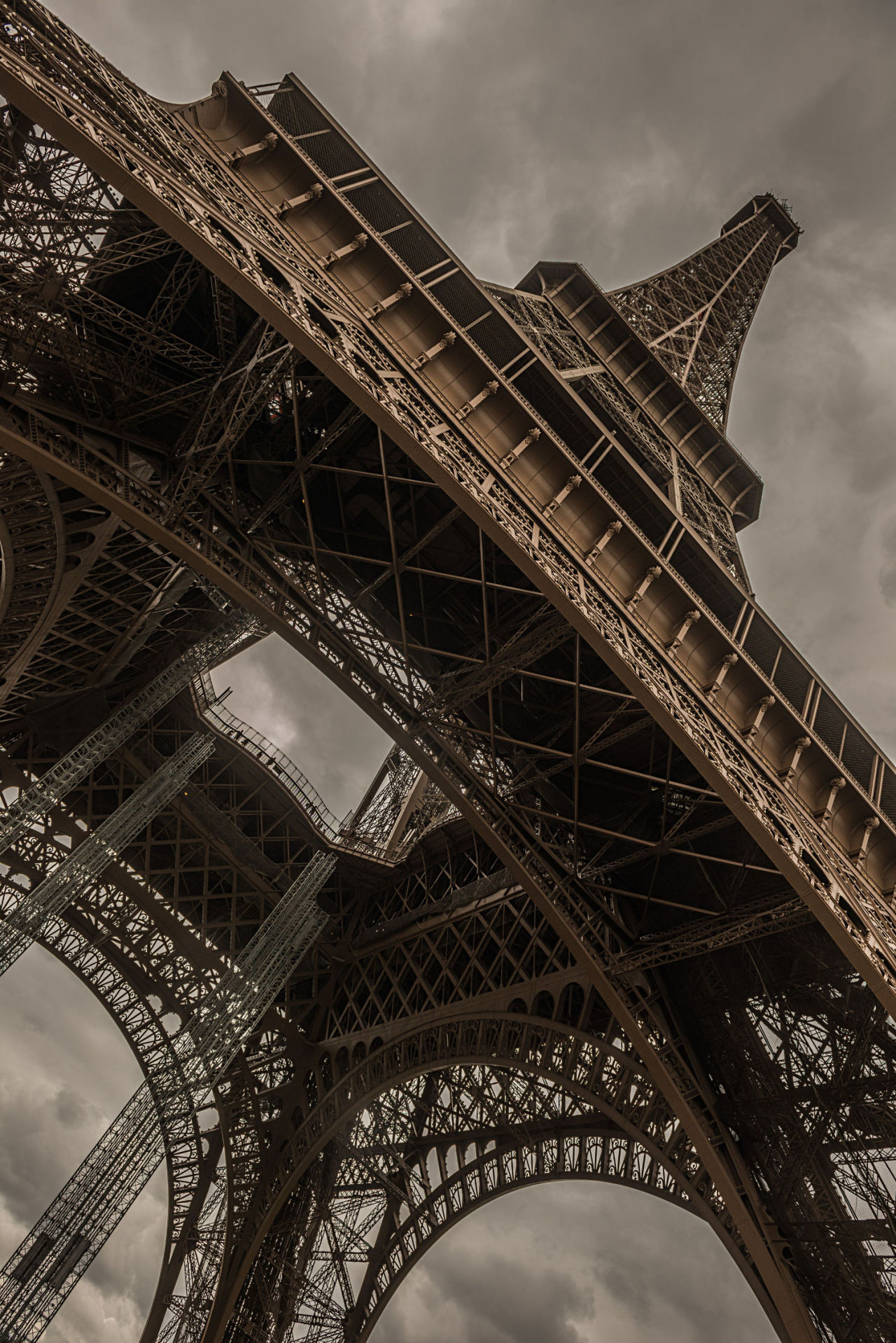Touring Steampunk Paris: Preface
The following is a reprint of the article that started it all. “Touring Steampunk Paris” by S. J. Chambers, Arthur Morgan, and photographs by Nicolas Meunier first appeared in its entirety in 2013 in MUNGBEING magazine, Issue #51: Travel.
The wonderful thing about Paris is you can see the same sights within myriad connotations. There is Hemingway’s Paris, the Impressionists’ Paris, Foodie Paris, Medievalist Paris, but what about a Steampunk Paris? This was something I had never thought of until French writer and editor of French-Steampunk.fr, Arthur Morgan, offered to take me on a secret Steampunk tour through the City of Lights while I was there promoting my book The Steampunk Bible. Morgan showed me that a tour through Steampunk Paris is a trip through time—an attempt to glimpse how nineteenth century innovation revamped the city, and how the present can continue to live with the past.
Steampunk is alive and well in France. In fact, it is one of the many international movements that gave my co-author Jeff VanderMeer and I hope of an evolving future for the genre. They have put a unique spin on the movement’s backward glances by emphasizing their unique history and culture, and the fact that science fiction was partly fathered on Parisian soil by countrymen Jules Verne and Charles Renouvier.
Before Jeter ever coined the term Steampunk, Renouvier coined the word “uchronie” in his 1876 novel Uchronia (Utopia in History), an Apocryphal Sketch of the Development of European Civilization Not as It Was But as It Might Have Been. It was one of the first novels to entertain a fictional timeline in our world as a thought experiment, and set the tone for much of what characterizes French Steampunk literature and art. Perhaps because uchronie is—like traditional sci-fi—a French birthright, Hollywood has been choosing Paris as its setting for its own Steampunk experimentation. While a lot of the literature is still on British and American soil, films such as The Three Musketeers, Sherlock Holmes: Game of Shadows, and the Academy Award winning Hugo all portray a Uchronistic Paris. A sense of Uchronie, then, is key to touring a Steampunk Paris.
It is in Paris that art and science were married by Daguerre and Nadar, and was where American Robert Fulton launched one of the first successful submarines in the Seine. Thirty years later, Jules Verne would immortalize that submarine by naming his own strange vessel after it in 20,000 Leagues Under the Sea. Always interested in the good and evil of Positivism, Verne also participated in the heated debates of urban planning, setting down his vision of where Paris was heading in one of his first and most clairvoyant novels Paris in the 20th Century.
In fact, some might claim that Paris is a Steampunk capital. While Steampunk originated with science fictional explorations of the Victorian Industrial Revolution, industry did not boom in England and the U.S. alone. France, Paris especially, was having its own industrial revolution, and thanks to the patronage of Emperor Napoleon III and the innovative urban planning of Baron Haussmann from 1853 to 1870, Paris quickly evolved from a medieval metropolis to the Modern capital of the world.
Attempts had been made during the Revolution and Napoleon I’s reign to bring the city out of the Dark Ages; narrow roads made jagged by crammed buildings made for a cramped and congested city that was considered a hotbed for disease. Under the Haussmann system, many of these cramped buildings were demolished for the good of the state, the roads were widened and repaved, and the buildings both new and old along the new avenues and boulevards had to meet an aesthetic code that promoted exterior symmetry. Paris was also at the forefront of architectural design, utilizing state-of-the-art techniques in steel and glass, as demonstrated in The Grand Palais, an iron-and-glass rival to London’s Crystal Palace and the Eiffel Tower.
By the beginning of the twentieth century, Haussmannian principles and ideas were rejected for more modernists and heterogeneous architectural explorations in urban planning, but as a whole the legacy remains and dominates most of the Parisian cityscape.
In fact, most of Paris feels unchanged. Despite the upheaval the Haussmann initiative caused, there is a nice tradition of developmental recycling. Paris, like most historical metropolises, is space-limited, and rather than outright reject their past and its geography, the Parisians recycled it, and have continued to do so as that century of innovation moved into the 20th and the 21st. This ability for the present to co-exist with the past gives all of Paris a sense of timelessness. Once you start to tour the Steampunk Paris sights, you discover that nothing is wholly what it seems, that the sense of uchronie comes from the fact that the bookstore you are reading in was once a monastery, and that the single thread connecting the two functions through time is the sanctity of language and books. Even modern storefronts, like the Champs-Elysées Louis Vuitton, mimics the nineteenth century architecture it is housed within by conjuring within its windows Vernian dreams of travel complete with hot air balloons and steamer trunks.
While some of the sights are more obvious than others, what may not be apparent is their significance to the present. Through the eyes of Steampunk, these sites represent a spark of revolution that has kept a tunnel alit through the 21st century. It is this Paris, this Secret pathway from its past to its present manifestation that I and Monsieur Morgan, would like to open up to you and your readers. Grab your trunks, and let us alight…..

Photo Credit: Nicolas Meunier, 2013